Description
The instruction for medical use
of Prestarium 5 medicine of mg
of Prestarium 10 mg
the Trade name
of Prestarium 5
mg Prestarium 10 mg
the International unlicensed
name Perindopril Lekarstvennaya
the Tablet form, coated 5 mg or 10 mg
Structure
One tablet contains
active agent – perindoprit arginine of 5 mg or 10 mg respectively (it is equivalent to the maintenance of a perindopril of 3.395 mg or 6.790 mg),
excipients: lactoses monohydrate, magnesium stearate, maltodextrin, silicon dioxide colloidal anhydrous, sodium of starch glikolit (type A)
a cover: glycerin, gipromelloza, copper chlorophyllin (E141ii), macrogoal 6000, magnesium stearate, titan dioxide (E171).
Description
of Prestarium 5 mg: tablets of the extended form, coated light green color, with markingon one party and risky on two parties.
Prestarium 10 mg: tablets of round shape, biconvex, coated tablets of green color, with markingon one andto other party
Pharmacotherapeutic group
the Drugs influencing a system renin-angiotensin. Enzyme Angiotensin-converting (EAC) inhibitors. AKF inhibitors. Perindopril
the ATX C09AA04 Code
perindoprit the Pharmacological Pharmacokinetics Absorption Later properties of intake quickly is absorbed from the digestive tract (DT). Cmax is reached in 1 h. The bioavailability of drug is 65-70%.
Perindoprit distribution and metabolism in the course of metabolism it biotransformirutsya with formation of an active metabolite – the perindoprilat (about 27%) and 5 inactive connections. Perindoprilat Cmax in plasma is reached between 3 and 5 h after Prestarium’s reception. Linking of the perindoprilat with proteins of blood plasma (generally with APF) makes 20% and depends on concentration of drug. Vd of the free perindoprilat is close to 0.2 l/kg.
Drug does not kumulirut in an organism. Repeated reception does not lead to cumulation and T1/2 corresponds to the period of its activity. At administration of drug at meal time the metabolism of a perindopril slows down. VyvedenieT1/2 the perindoprila makes 1 h Perindoprilat is brought from an organism through kidneys, T1/2 of its free fraction makes about 17 h that allows to reach steady state in 4 days.
The pharmacokinetics in special clinical cases
At elderly patients and also at patients with renal and heart failure, removal of the perindoprilat slows down.
At patients with cirrhosis the hepatic clearance of an initial molecule of a perindopril slows down twice. However the number of the formed perindoprilat does not decrease therefore dose adjustment is not required.
A pharmacodynamics
Perindopril – inhibitor of the angiotensin-converting enzyme (ACE).
APF catalyzes transformation of angiotensin I into angiotensin II having vasoconstrictive properties. Besides, APF stimulates secretion of Aldosteronum and accelerates disintegration of vasodilating compound of bradykinin to inactive heptapeptide.
The mechanism of antihypertensive action of the perindoprilat is connected with inhibition of activity of APF which leads to reduction in the rate of transformation of angiotensin I into angiotensin II. Reduction of concentration of angiotensin II is resulted by secondary increase in activity of renin of plasma (due to elimination of negative feedback at renin release) and direct decrease in secretion of Aldosteronum. Besides, perindoprilat influences a kinin-kallikrein system, interfering with bradykinin disintegration. Is pro-medicine of which in an organism the active metabolite perindoprilat
Hypertensia
of Prestarium is formed it is effective in soft, moderate and heavy arterial hypertension. Drug reduces systolic and diastolic arterial blood pressure both in a dorsal decubitus, and in a standing position.
Thanks to vasodilating action, drug reduces the general peripheric resistance of vessels (GPRV) and reduces patholologically the increased arterial blood pressure (ABP), thereby improves rheological properties of blood, without influencing heart rate. Drug, as a rule, increases a renal blood stream, at the same time the level of glomerular filtration does not change.
After intake in an average single dose the maximum hypotensive effect is reached in 4-6 hours and remains within 24 hours.
At proper response of the patient to drug ABP it is normalized within 1 month and remains stable without development of a tachyphylaxis. Interruption of treatment is not followed by a withdrawal.
At prolonged use of Prestarium promotes recovery of elasticity of large arterial vessels, adjusts gistomorfologichesky changes in resistant arteries and causes regression of a hypertrophy of a left ventricle of heart.
Chronic heart failure
of Prestarium normalizes cardiac performance, reducing preloading and an afterload. At use of drug the pressure decrease of filling of the left and right ventricles, decrease in OPSS is noted.
At use of Prestariuma for treatment of heart failure in the recommended doses of the significant changes of the ABP after the first administration of drug and after prolonged use it is not observed.
Indications
– arterial hypertension
– chronic heart failure
– coronary heart disease: reduction of frequency of cardial events at patients with a myocardial infarction in the anamnesis and/or a state after revascularization.
The route of administration and doses
is recommended to take the Drug in the morning, 1 time a day, before food.
At treatment of arterial hypertension of Prestarium it can be used as monotherapy or in a combination with hypotensive drugs of other groups. The recommended initial dose – 5 mg once a day (morning), if necessary a dose can be gradually increased up to 2 tablets (10 mg) a day.
At the significant activation of the renin-angiotensin-Aldosteronum system (in particular, at patients with renovascular hypertensia, electrolytic disturbances and/or with a reduced the volume of the circulating blood (VCB), a decompensation of warm activity or heavy hypertensia) after reception of an initial dose there can occur sharp falling of arterial blood pressure. Treatment of such patients is recommended to begin with a dose 2.5 mg under stringent control. After 1 month of therapy the dose can be raised to 10 mg once a day.
Treatment of elderly patients with arterial hypertension it is necessary to begin 2.5 mg with a dosage, gradually increasing it: up to 5 mg in a month after an initiation of treatment, then – up to 10 mg, depending on a functional condition of kidneys (see the table below).
At treatment of chronic heart failure the recommended dose – a half of a tablet (2.5 mg) in day.
Use of drug about potassium needs to be begun with not preserving diuretics and/or digoxin and/or β-blockers under fixed medical observation, the recommended initial dose makes 2.5 mg in the morning. At good tolerance the dose is increased step by step by 2.5 mg before achievement of a dose by 5 mg once a day with observance of an interval not less than 2 weeks. Clinical reaction of each specific patient has to be the basis for such correction.
At treatment of coronary heart disease administration of drug it is necessary to begin with a dose 5 mg within 2 weeks once a day, then to increase to 10 mg once a day, depending on a condition of kidneys and on condition of good tolerance of a dose 5 mg.
Patients of advanced age therapy should begin with a dose 2.5 mg within 1 week once a day, then, within 1 week – on 5 mg once a day, then – to increase a daily dose to 10 mg depending on function of kidneys (see the table below). The dose is raised only in case of good tolerance of lower previous dose.
Dose adjustment in a renal failure
Clearance of creatinine (ClCr),
ClCr dose Recommended to ml/min. ≥ 60
5 mg a day
30<, ClCr<,
60 2,5 mg a day
15<, ClCr<,
30 2,5 mg a day every other day
the Patients who are on a hemodialysis *
ClCr<
of 30 2,5 mg in day of dialysis
* Dialysis clearance of the perindoprilat makes 70 ml/min. The patients who are on a hemodialysis have to take the drug after dialysis session.
Dose adjustment in an abnormal liver function is not required.
Side effects
the Frequency of side reactions which can arise during therapy is specified in a type of the following gradation: very often (& gt, 1/10), it is frequent (& gt, 1/100, & lt, 1/10), infrequently (& gt, 1/1000, & lt, 1/100), is rare (& gt, 1/10,000, & lt, 1/1000), is very rare (& lt, 1/10,000), frequency is not established (frequency cannot be counted according to available data).
Often
the cough (which is often described as dry or irritating), short wind
– a headache, an asthenia, dizziness, spasms, paresthesias, disturbances of flavoring feelings, disorders of vision, sonitus, vertigo,
– arterial hypotension
– nausea, vomiting, pains in a stomach, a dysgeusia, diarrhea or a constipation, dyspepsia
– rash, a skin itching
Infrequently
– an eosinophilia
– a hyponatremia
– a hyperpotassemia, passing increase in level of urea and creatinine in blood serum
– a hypoglycemia,
– drowsiness,
– a syncope, the indisposition, stethalgias
– tachycardia, strong heartbeat
– a vasculitis, peripheral hypostases, temperature increase of a tela
– eczema, photosensitivity
– an arthralgia, myalgia
– accidental injuries owing to falling
is rare
– a bronchospasm
– dryness in a mouth, increase in activity of liver enzymes and level of bilirubin in serum
– a renal failure, impotence
– a Quincke’s disease of the face, extremities, lips, mucous membranes, language, a throat, glottis and/or throat, a small tortoiseshell
– the increased sweating
– disturbances of mood and a dream
Very seldom
– arrhythmia, stenocardia, a myocardial infarction and a stroke (perhaps, caused by the profound hypotension in patients of group of high risk)
– eosinophilic pneumonia, rhinitis
– pancreatitis, cytolytic or cholestatic hepatitis
– an erythema (different types)
– decrease in level of hemoglobin and a hematocrit, thrombocytopenia, a leukopenia/neutropenia, an agranulocytosis or a pancytopenia, hemolytic anemia (at patients with congenital insufficiency of enzyme glyukozo-6-fosfatdegidrogenazy is (G-6PDH)).
– confusion of consciousness
– an acute renal failure
of the Contraindication
– hypersensitivity to a perindopril and other compound components of drug or the APF any other inhibitor
– a Quincke’s disease (hereditary or idiopathic) against the background of the previous therapy by APF inhibitors in the anamnesis
– pregnancy and the period of a lactation
– the combined reception with Aliskiren the patients having diabetes or a renal failure (SKF & lt, 60 ml/min. / 1.73 m ²)
– children and teenagers up to 18 years (the efficiency and safety is not established).
Medicinal interactions
APF Inhibitors reduce the potassium loss caused by diuretics. Kaliysberegayushchy diuretics (for example, Spironolactonum, Triamterenum or amiloride), can lead potassium additives or kaliysoderzhashchy substitutes of salt to significant increase in content of potassium in serum. To apply kaliysberegayushchy diuretics, potassium additives or kaliysoderzhashchy substitutes of salt follows with care and also frequent monitoring of potassium in serum is necessary.
At the patients taking the diuretic drugs, especially at patients with decrease in OCK and/or electrolytic disturbances after the beginning of therapy the profound lowering of arterial pressure can be observed by APF inhibitor. Diuretic cancellation, completion of OCK or correction of electrolytic balance before an initiation of treatment and also purpose of low initial doses of a perindopril and their gradual increase reduce risk of developing hypotension.
At the combined intake of lithium and APF inhibitors, cases of reversible increase in concentration of lithium in serum and development of toxic effect of lithium are noted. The accompanying intake of thiazide diuretics can increase already available risk of development of toxicity and enhance toxicity of lithium. The combined reception of a perindopril and drugs of lithium is not recommended, but at its need it is necessary to control carefully lithium content in blood serum.
Non-steroidal anti-inflammatory drugs (NPVS), including acetylsalicylic acid in a dose 3g/put reduce hypotensive effect of APF inhibitors. Besides, it is noted that NPVS and APF inhibitors render additive effect on increase in level of potassium in blood plasma,
leading to deterioration in function of kidneys. The specified action has reversible character, but the acute renal failure, especially at patients with a renal failure, for example, at elderly patients in rare instances can develop or at an obezvozhennost.
The combined intake of hypotensive and vasodilating drugs can lead to strengthening of hypotensive effect of a perindopril. The accompanying intake of nitroglycerine and other nitrates or vasodilators can lead to a further lowering of arterial pressure.
Joint intake of APF inhibitors and antidiabetic drugs (insulin, oral hypoglycemic drugs) can lead to strengthening of hypoglycemic effect, especially in the first weeks of therapy and at patients with a renal failure.
Perindopril can be appointed along with acetylsalicylic acid, thrombolytic drugs, β-blockers and/or nitrates.
The combined intake of tricyclic antidepressants, antipsychotic drugs and neuroleptics with APF inhibitors can lead to a further lowering of arterial pressure.
Sympathomimetic means can reduce hypotensive effect of APF inhibitors.
At joint treatment perindoprily and gold drugs (sodium injections aurotiomalat) at some patients the reaction was noted (including, face reddening, nausea, vomiting and hypotension).
Special instructions
the Aortal and mitral stenosis / a hypertrophic cardiomyopathy
of Prestarium, as well as other APF inhibitors, has to be appointed with extra care to patients with a stenosis of the mitral valve, a stenosis of an aorta or a hypertrophic cardiomyopathy.
Coronary heart disease
If within the first month of therapy perindoprily the episode of unstable stenocardia took place, then before continuing treatment, it is necessary to carry out the careful assessment of a ratio of therapeutic advantage and risk.
Hypotension
AKF Inhibitors can cause a lowering of arterial pressure. Hypotension with clinical manifestations seldom develops at hypertensive patients without associated diseases, more often it arises at patients with reduced OCK (accepting diuretics, being on a diet with limited consumption of salt, patients on dialysis, the patients having diarrhea or vomiting) or at patients about more heavy renin – dependent hypertensia. Hypotension with clinical manifestations was noted at patients with heavy heart failure with clinical manifestations, with the accompanying renal failure or at its absence. Most likely it can come at patients with heavier degree of heart failure, as a result of reception of high doses of loopback diuretics, a hyponatremia or a renal failure. Patients with the increased risk of approach of hypotension with clinical manifestations at the beginning of therapy and during dose adjustment should carry out careful monitoring. It is also necessary to adhere to similar approach at treatment of the patients having ischemia or cerebrovascular diseases at which sharp hypotension can lead to a myocardial infarction or a stroke.
At some patients with stagnant heart failure with the normal or lowered arterial blood pressure the reception of Prestariuma can lead to additional decrease in system arterial blood pressure. It is the expected effect which is usually not demanding the treatment termination. In some cases, at approach of the significant clinical manifestations of hypotension, there can be a need for a dose decline or drug withdrawal.
The renal failure
in case of disturbance of renal function (clearance of creatinine & lt, 60 ml/min.) an initial dose has to be adjusted according to clearance of creatinine of the patient, and then depending on reaction of the patient to treatment. For these patients the regular monitoring of level of potassium and creatinine is a common practice.
Hypotension which comes at the beginning of therapy by AKF inhibitors at patients with heart failure with clinical manifestations can lead to further deterioration in function of kidneys. There are messages about approach in this situation of an acute renal failure which usually has reversible character.
Some patients with a bilateral stenosis of renal arteries or a stenosis have arteries of the only kidney (especially in the presence of a renal failure), accepting APF inhibitors, cases of reversible increase in level of urea and creatinine in serum were noted.
At some patients with hypertensia without visible disturbance of vessels of kidneys the increase in concentration of urea in blood and creatinine in serum was noted, usually it had insignificant and passing character, especially at the combined Prestarium’s reception and diuretic. It is the most probable at the patients who are already suffering from disturbance of renal function. In this case reduction of a dosage and/or the termination of intake of diuretic and/or Prestarium can be required.
A hemodialysis
At the patients receiving AKF inhibitors when carrying out a hemodialysis with use of high-flowing membranes (for example, AN69®) noted anaphylactoid reactions. Therefore it is desirable to use a membrane of other type or to apply antihypertensive of other pharmacotherapeutic group.
Hypersensitivity / anaphylactic hypostasis
of the Message about a Quincke’s disease of the face, extremities, lips, mucous membranes, language, a glottis and/or throat at the patients undergoing treatment by AKF inhibitors, including Prestarium, were rare. These reactions can come at any time during therapy. In such cases Prestarium’s reception it is necessary to stop and carry out immediately the corresponding monitoring up to total disappearance of symptoms. Usually, in cases when hypostasis affected only a face and lips, it passed without any treatment though anti-histamine drugs helped to facilitate symptoms.
In a paraglossa, a glottis or a throat at which obstruction of airways is probable, it is necessary to take the appropriate measures immediately. Emergency aid can include prescribing of adrenaline and/or maintenance of passability of airways. The patient has to be under fixed medical observation before total and final disappearance of symptoms.
The increased risk of approach of a Quincke’s disease at intake of AKF inhibitor exists for the patients who had the Quincke’s disease which is not connected with intake of AKF inhibitors.
The patients accepting AKF inhibitors have rare messages about the Quincke’s disease affecting a GIT. These patients complained of the abdominal pain (which is followed or not vomiting and nausea), in certain cases did not precede it angiootek persons, and S-1 level of esterase was normal. Diagnostics of an angiootek was carried out by means of the procedures including a computer tomography of a stomach or at ultrasonic inspection, or during surgery, symptoms passed after the termination of intake of AKF inhibitor. At the patients accepting AKF inhibitor with complaints to an abdominal pain, angiootek, the mentioning GIT, has to join in the differential diagnosis.
Anaphylactoid reactions when holding procedures of an aferez of a lipoprotein of the low density (LDL) and during desensitization
In rare instances at the patients receiving procedures of an aferez of LDL by means of dextransulphatic absorption when prescribing AKF inhibitors were noted cases of development of anaphylactoid reactions. It was possible to avoid these reactions by temporary cancellation of AKF inhibitor every time before carrying out an aferez.
Anaphylactoid reaction came at some patients receiving AKF inhibitors during the desensibilizing therapy (for example, gimenopterichesky poison). At some patients of these reactions it was possible to avoid by temporary cancellation of AKF inhibitor, but they came in case of careless administration of drug again.
The abnormal liver function
the Patients receiving AKF inhibitor at whom jaundice develops or considerably raises the level of enzymes of a liver, have to stop intake of AKF inhibitor and undergo careful medical examination.
Neutropenia/agranulocytosis/thrombocytopenia/anemia
At patients with normal function of a liver and lack of other complicating factors, a neutropenia comes seldom. With extra care it is necessary to apply perindoprit at patients with general diseases of connective tissue, against the background of reception of immunosuppressive means, Allopyrinolum or procaineamide and at their combined use, especially at patients with an initial renal failure. Some patients had serious infectious diseases, in some cases, resistant to intensive antibiotic treatment. When assigning a perindopril such patients are recommended to control periodically quantity of leukocytes in blood. Patients have to report to the doctor about any symptoms of infectious diseases (for example, a tonsillitis, fever).
The race
the Quincke’s disease at treatment by AKF inhibitors comes at patients of negroid race more often, than at patients of other races. As well as others of AKF inhibitor, the hypotensive efficiency of a perindopril at patients of negroid race can be lower, than at patients of other races. Perhaps, the reason of it is that hypertensia at such patients very often passes against the background of the low content of renin.
Cough
during treatment by APF inhibitors at the patient can arise dry unproductive cough which stops after drug withdrawal.
Surgical intervention / the General anesthesia
can lead Use of AKF inhibitors for the patients who are exposed to surgical intervention using the general anesthesia to the significant decrease in the ABP, especially when using the means for the general anesthesia having antihypertensive effect. It is recommended to stop intake of AKF inhibitors of long action, including perindoprit, for 12 h before surgical intervention.
The hyperpotassemia
the Hyperpotassemia can develop in treatment time AKF inhibitors, including and perindoprily. Risk factors of a hyperpotassemia are the renal failure, a renal failure, advanced age * 70 years), diabetes, some accompanying states (dehydration, a sharp decompensation of chronic heart failure, a metabolic acidosis), a concomitant use of kaliysberegayushchy diuretics (such as Spironolactonum, eplerenon, Triamterenum, amiloride) and also drugs of potassium or kaliysoderzhashchy substitutes of edible salt and also use of other means promoting increase in maintenance of potassium ions in blood plasma are more senior (for example, heparin) (especially at patients with reduced function of kidneys). The hyperpotassemia can lead to serious, sometimes to fatal disturbances of a heart rhythm. If the combined reception of the means stated above is necessary, treatment has to be carried out with care, against the background of regular control of maintenance of potassium ions in blood serum.
Kaliysberegayushchy diuretics and drugs of potassium
As a rule, combined use of a perindopril and kaliysberegayushchy diuretics and also drugs of potassium and kaliysoderzhashchy substitutes of edible salt is not recommended.
Double blockade system renin-angiotensin-aldosteronovoy
At susceptible patients, especially at the combined intake of the medicines influencing this system cases of hypotension, a syncope, blow, a hyperpotassemia and changes of renal function were observed (including an acute renal failure). In this regard, double blockade system renin-angiotensin-aldosteronovoy by the combined intake of inhibitor angiotensin – I-reformative enzyme and a blocker of receptors of angiotensin II or an aliskiren is not recommended.
Patients with diabetes
the Patients with the diabetes taking the oral antidiabetic drugs or insulin within the first month of treatment by AKF inhibitors should carry out careful monitoring.
Excipients
At the planned surgical intervention with anesthesia it is necessary to stop treatment of Prestariumom in 1 day prior to operation.
Drug contains lactose therefore it should not be applied in a congenital galactosemia, a glyukozo-galaktozny malyabsorbtsionny syndrome and also at deficiency of lactase.
Use in pediatrics
the Efficiency and safety of use of drug for children and teenagers is not established in this connection prescribing of drug is not recommended to these categories of patients.
Pregnancy and the period of a lactation
If pregnancy is planned or the fact of pregnancy was confirmed, it is necessary to pass to an alternative type of treatment as soon as possible. Use of drug in the II-III trimesters of pregnancy and in the period of a lactation contraindicated.
Features of influence of medicine on ability to drive the car and potentially dangerous mechanisms
At some patients in response to decrease in the ABP can develop various individual reactions, especially at the beginning of therapy or at addition to the carried-out therapy of other antihypertensives.
It is necessary to be careful during the driving of motor transport and work with potentially dangerous mechanisms in connection with possible development of dizziness.
Overdose
Symptoms: acute hypotension, bradycardia, dizziness, condition of alarm, cough, electrolytic disturbances, renal failure, shock, tachycardia, disturbance of a rhythm, hyperpnea (hyperventilation of lungs).
Treatment: intravenous administration of solution of sodium of chloride of 9 mg/ml (0.9%), giving of horizontal position, intravenous administration of solutions for completion of deficiency of liquid, drugs of angiotensin II and/or catecholamines, atropine. The patient has to be under close attention, it is desirable in the block of intensive care. It is necessary to control constantly the content of electrolytes and creatinine in the patient’s serum. If necessary – cardiostimulation (for elimination of bradycardia). A hemodialysis (it is necessary to avoid use of polyacrylonitrile high-line membranes).
A form of release and packing
On 30 tablets in polypropylene containers, with the dosing opening for gradual delivery of tablets. The container is closed by an opaque stopper from polyethylene of the low density containing 2 g of siccative gel.
On 1 or 3 containers together with the instruction for use in the state and Russian languages put in a cardboard pack.
To Store storage conditions in densely corked container at a temperature not above 30 °C.
To store out of children’s reach!
3 years
not to apply a period of storage after the expiration date specified on packing.
Prescription status
According to the prescription
Les Laboratoires Servier Industrie Producer (Le Laboratoir of Servye Indastri), France
or
Servier (Ireland) Industries Ltd (Servye (Ireland) Industries Ltd), Ireland
the Owner of the registration certificate
of Les Laboratoires Servier (Le Laboratoir of Servye), France
the Address of the organization accepting in the territory of the Republic of Kazakhstan claims from consumers on products:
Representation of Les Laboratoires Servier in PK
050020, Almaty, Dostyk Ave of 310 g, Business center, the 3rd floor
Ph.: (727) 386 76 62, 386 76 63, 386 76 64, 386 76 70, 386 76 71
Fax: (727) 386 76 67
E-mail:
To develop kazadinfo@kz.netgrs.com
Additional information
| Ingredient |
|---|





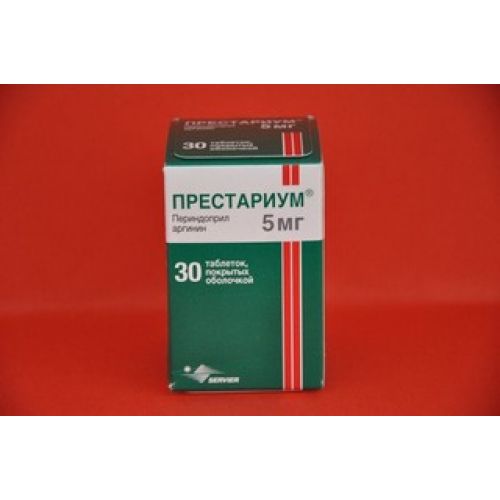
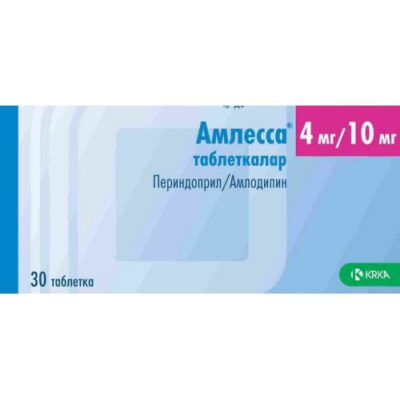
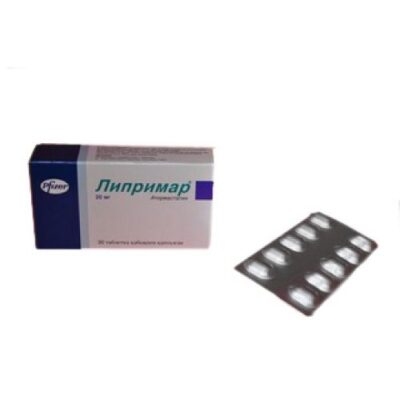
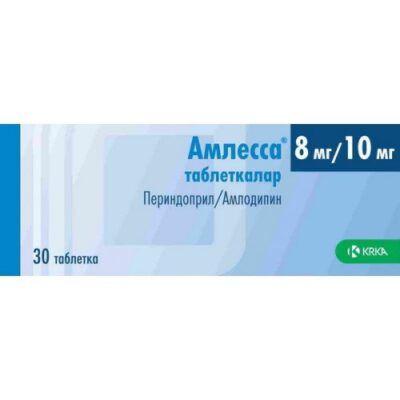
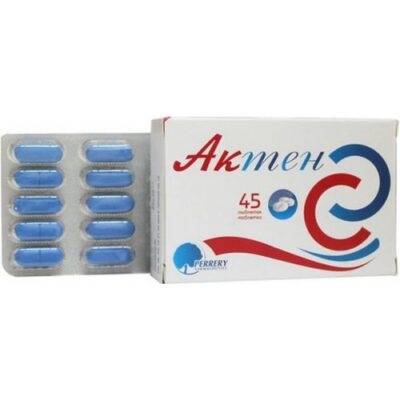
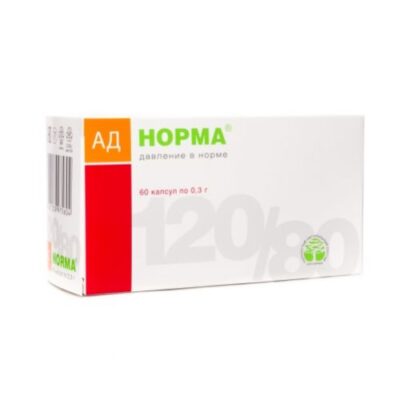
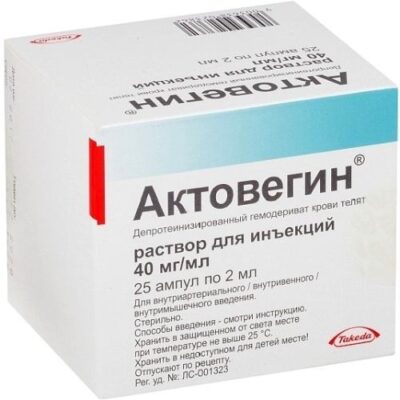
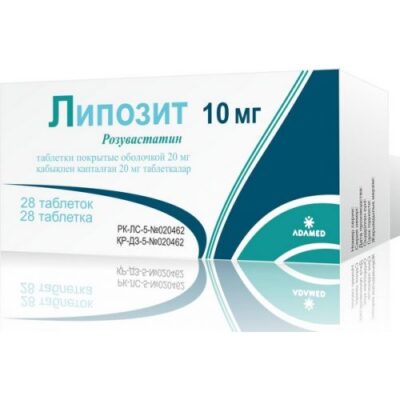
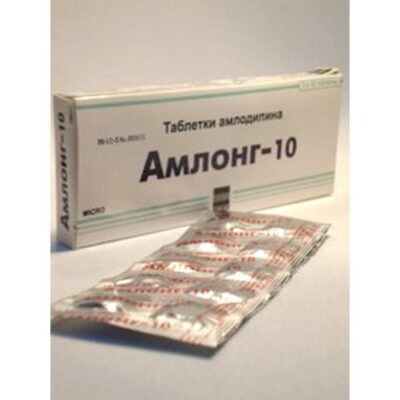
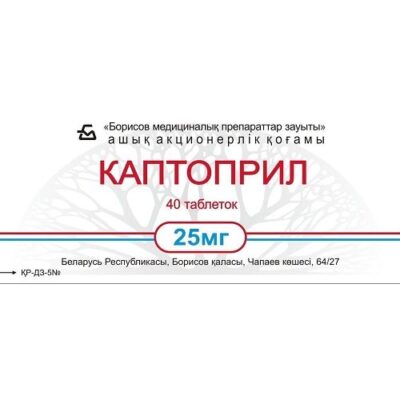
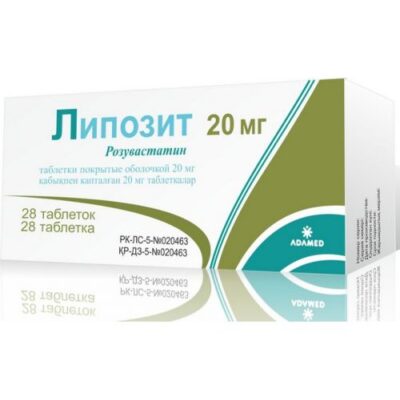






Reviews
There are no reviews yet.